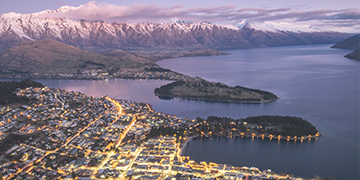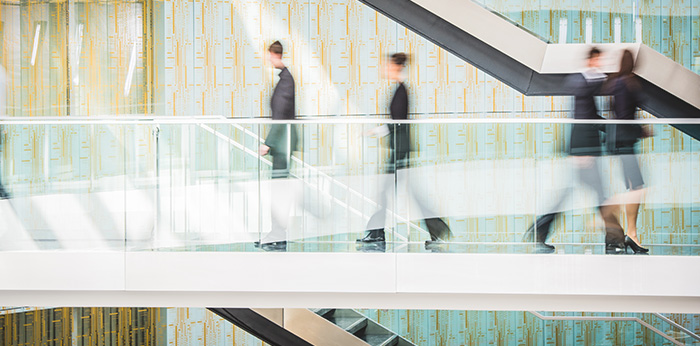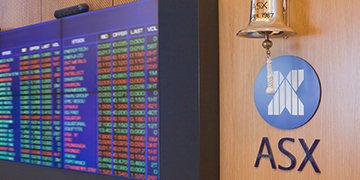
From day one, EROAD said it was a high-tech, high-growth company. It was in a race to build its subscriber base and capitalise on the opportunity before it. EROAD CEO Steven Newman says ASX suits fast-growing NZ tech companies with global ambition.
Founded in 2009, EROAD (ASX: ERD) has developed and commercialised advanced technology that provides road-charging, health-and-safety, and fleet-management services on one platform. The Auckland-based company describes itself as “the future of transportation technology”.
In 2014, EROAD listed on NZX (NZX: ERD) after raising NZ$40 million through an Initial Public Offering (IPO). The capital funded EROAD’s entry into the North American road-technology market and quickened its global expansion.
Newman, a serial tech entrepreneur, knew EROAD’s future was overseas. “I’d previously worked in tech businesses where New Zealand accounted for less than 5 per cent of revenue. We knew the NZ market was not large enough to sustain a single EROAD product. We had to prove our business model in NZ and then quickly expand into larger markets.”
EROAD opened its first US office in Portland, Oregon, in 2014, after a favourable audit of its technology by the Oregon State Government. EROAD believed its weight-mileage tax solutions could transform the management and collection of weight-mileage tax in Oregon.
Although EROAD exceeded its operational milestones in NZ, its share price mostly traded sideways on NZX between 2014 and 2020. “When EROAD listed on NZX, we were heavily owned by a small number of institutions,” says Newman. “From the start, we had a liquidity problem. Institutions on our share register were supportive, but some became ‘maxed out’ in their EROAD position.
“Other institutions, including from Australia, were excited by EROAD’s story but there wasn’t enough liquidity for them to join our register. Offshore funds weren’t going to muck about with EROAD if they couldn’t get a meaningful position in our stock. It was a Catch-22 situation.”
Poor liquidity hampered EROAD’s ability to raise capital and grow. “You get stuck in this situation where lack of liquidity weighs on the share price, which in turn affects the company’s ability to raise capital, attract new investors, and thus improve liquidity. We also needed more retail investors on the register to better balance our institutional ownership.”
ASX dual listing
EROAD thought a dual listing on ASX would boost its liquidity by exposing the company to a bigger pool of capital, and more fund managers and technology analysts.
In September 2020, EROAD dual-listed on ASX through the NZ Foreign Exempt rule. This means it does not have to comply with the full suite of ASX Listing Rules, or benchmark its governance against the ASX Corporate Governance Council’s Principles & Recommendations.
EROAD was valued at A$273.2 million when it began trading on ASX.[i] Ten months later, the company was capitalised at A$516 million[ii] after its share-price rally in 2021.[iii]
EROAD achieved several goals with its dual listing. The company successfully raised NZ$42 million through a placement to institutions, simultaneously with its ASX dual listing. In October 2020, EROAD closed an oversubscribed NZ$8 million Share Purchase Plan.
EROAD Chairman Graham Stuart said in May 2021, upon the release of the company’s FY21 results: “The ASX listing and simultaneous $53m[iv] capital raising in September 2020 ensured we had the upfront funding to be able to begin this acceleration. We achieved what we set out to do. EROAD is now stronger than ever and ready to grow – and grow quickly.”
In July 2021, EROAD completed an oversubscribed NZ$$64.4 million placement to institutions. It also opened a NZ$16.1 million share purchase plan for retail investors.
“Our capital raisings since the dual listing have been well supported,” says Newman. “The tough part has been having to scale back investors who wanted more stock. EROAD has worked hard to earn that support, but there’s no doubt the dual listing has helped.”
The recent capital raisings will partly fund EROAD’s acquisition of Coretex, a transport technology company that focuses on industry verticals, such as Less-Than-Truckload (LTL) transport, refrigerated solutions, and waste and recycling. Coretex has US, Australian, and NZ offices.
In the July 2021 acquisition announcement, Newman said: “The acquisition of Coretex is truly transformational for EROAD, accelerating our key growth metrics by two years in North America and Australia and positioning us to become a bigger player in the global telematics market.”
EROAD’s investor-relations strategy is working. Liquidity in EROAD’s ASX-listed shares is approximately three times greater than its NZX-listed shares. Institutional and retail ownership is better balanced with an estimated 75/25 split.[v] And the number of retail investors on EROAD’s register (about 2,000) is sharply higher than before it listed on ASX.
Two Australian stockbroking firms cover EROAD. “Broking coverage was important,” says Newman. “EROAD has been able to attract high-quality tech analyst coverage in Australia.”
The Australian market’s understanding of Software-as-a-Service (SaaS) business models was another attraction, says Newman. “When we were sole listed on NZX, there were a handful of globally focused SaaS companies on that exchange. ASX has a much larger number of SaaS stocks and fund managers who understand this business model. That means EROAD has SaaS peer companies to be valued against.”
Alignment of strategy and exchange
EROAD’s ASX dual-listing experience has been “extremely positive", says Newman. “In hindsight, we should have done it earlier. EROAD was going to dual list on ASX early in 2020, but Covid scuttled those plans.”
Newman says ASX is a good fit for EROAD. “ASX has the right mindset and values for high-growth tech companies. ASX has done well in building a large tech sector on its market.”
EROAD is focused on growth and reinvesting earnings into the business. The Global telematics market is forecasted to have a compound annual growth rate of about 20% for the next five years.
Newman says emerging tech companies should carefully consider where they list. “If the NZ company is targetting a global market and needs to keep raising capital to grow, it should consider listing on the ASX.”
Newman is concerned that too many promising NZ tech companies will be lost to private equity. “Outstanding NZ tech firms that are worth $50-$100 million continue to be bought by US or European equity firms. Often, tech founders are exhausted, so it’s easy to take a big cheque when private equity comes knocking. Some founders don’t realise they can potentially raise capital through an ASX listing, keep control and build much more wealth in the long run.”
He believes ASX offers more for NZ tech companies than the US NASDAQ exchange. “If your company is in the US in a very visible way, a NASDAQ listing might make sense. But the risk is you become one of many companies on NASDAQ and get lost in the noise.”
As a passionate NZ tech leader, Newman knows that the challenges of an ASX dual listing are multi-faceted. “It’s not always a comfortable conversation. I know some NZ companies that had significant pushback from local investors after they dual-listed on ASX. Some investors thought the companies turned their back on NZ. That couldn’t be further from the truth.”
Newman adds: “The reality is, a dynamic NZ economy needs NZ tech companies that can raise capital and become leaders in global markets. To achieve that, you need to be listed on an exchange that suits tech companies. As EROAD continues to exploit its global opportunity, we are well-positioned to create more jobs and wealth for NZ.”
[i] ASX internal data. Based on issue price multiplied by the number of issued securities.
[ii] Morningstar. At July 23, 2021. Based on $6.30 share price.
[iii] EROAD’s ASX-listed shares rallied from around $3.70 in September 2020 to $6.30 in July 2021.
[iv] In Australian dollars.
[v] Estimate provided by EROAD.
Find out more
Find out more about the top New Zealand companies that are listed on ASX.



